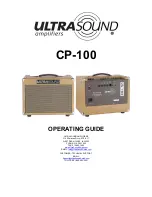
12
• When the instrument is not being used for an extended period of time, loosen the strings.
• The instrument can be played after making sure that the bridge is standing vertically when compared to
the surface on which the bridge stands. Playing the instrument with a leaning bridge can result in a
shorter bridge life, or poor sound quality.
Make sure the bridge is at a right angle.
Also, make sure each of the strings are positioned in their corresponding grooves.
* Make sure the side of the bridge facing the tailpiece is vertical when compared to the surface on which
the bridge stands.
4
Use a piano, tuning fork, tuner, etc., and adjust the pitch of each string using the tuning pegs.
* Refer to the “Tuning” section (page 7).
Correct
Tailpiece
Bad
Bad
Right
angle
Body
• Adjust string length so that the string does not rub up against the peg box wall. Tuning the string if it is in
contact with the peg box wall can result in a broken string, etc.
Rotate the
tuning peg
as shown
Rotate the
tuning peg
as shown
1st string (G)
4th string (E)
2nd string (D)
3rd string (A)
Winding the 3rd
and 4th strings
Winding the 1st
and 2nd strings
Wind once
or twice
Remain-
ing winds
Remain-
ing winds
Wind once
or twice
3
Insert the end of the string into the hole on the peg, turn the peg and make one or two wraps to one side of
the hole as shown in the illustration below, then make the remaining wraps in the opposite direction.
When looking at the front of the instrument, the first couple of wraps on the 1st (G) and 2nd (D) strings
should be to the left of the hole, where as on the 3rd (A) and 4th (E) strings, the first wraps should be
made to the right.


































